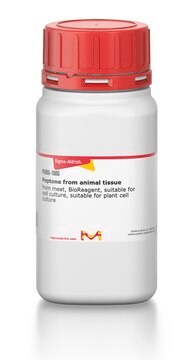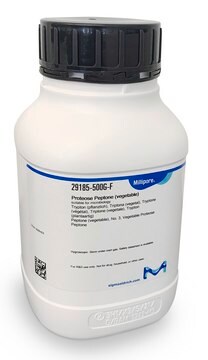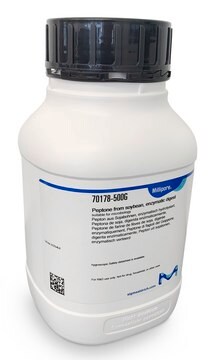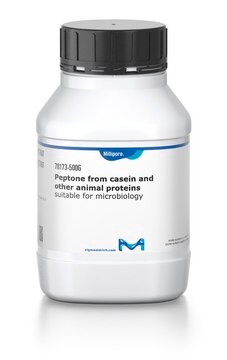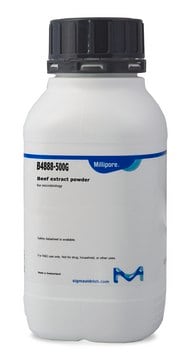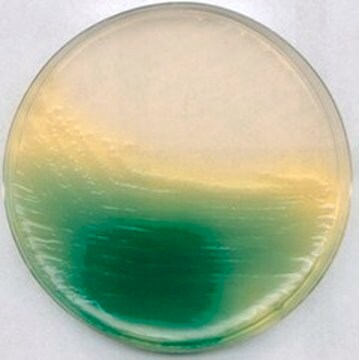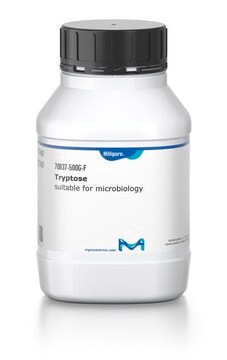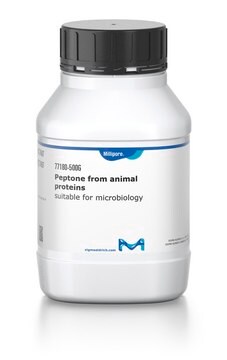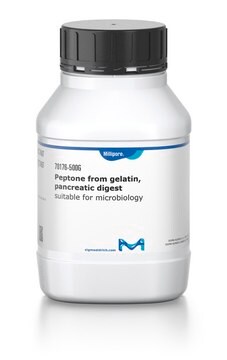82450
Proteose-Peptone
suitable for microbiology
Synonym(s):
Peptone from bovine meat
About This Item
Recommended Products
biological source
Porcine pancreas
bovine skeletal muscle (
)
Quality Level
form
powder
composition
amino-nitrogen, ≥3%
total nitrogen (N), ≥11%
packaging
pkg of 100 g
pkg of 500 g
ign. residue
≤20%
loss
≤6.0% loss on drying
pH
6.0-8.0 (25 °C, 2% in H2O)
solubility
H2O: 2%, clear, slightly yellow to brown
application(s)
food and beverages
microbiology
suitability
Corynebacterium spp.
Haemophilus spp.
Neisseria spp.
Salmonella spp.
Staphylococcus spp.
Looking for similar products? Visit Product Comparison Guide
General description
Application
Storage Class Code
11 - Combustible Solids
WGK
WGK 3
Flash Point(F)
Not applicable
Flash Point(C)
Not applicable
Personal Protective Equipment
Choose from one of the most recent versions:
Already Own This Product?
Find documentation for the products that you have recently purchased in the Document Library.
Customers Also Viewed
Our team of scientists has experience in all areas of research including Life Science, Material Science, Chemical Synthesis, Chromatography, Analytical and many others.
Contact Technical Service